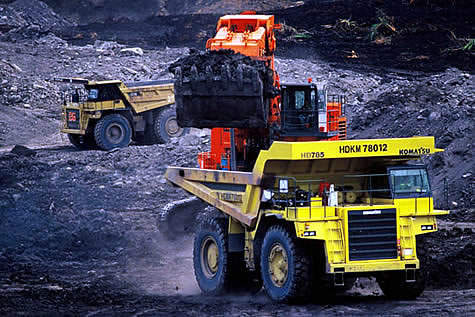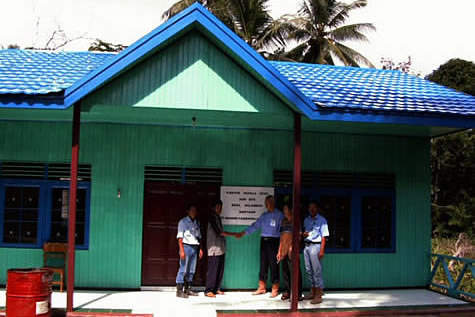The Sebuku coal mine is an open cut truck and shovel coal-mining operation located on the tiny and remote island of Sebuku, in the province of South Kalimantan, Indonesia. It is owned and operated by the Straits Resources Singapore-listed subsidiary Straits Asia Resources.
Sebuku Island is a remote location, 3’30" south of the equator to the south-east of the island of Borneo, approximately 5km east of Laut Island. The island is 35km from north to south and is 10km wide at its widest point.
Before the mine, the population had absolutely no infrastructure serving its 4,000 or so residents save for walking tracks. It now has local access roads, a new portsite on the southern end of the island as well as an airfield. The construction of site infrastructure started in July 1997 with waste stripping for the construction of dams, bunds and the run of mine (ROM) stockpile area and coal mining commencing in December 1997.
Annual production is currently 3mtpa and around 700 people are employed by the operation.
Sebuku Island geology and reserves
The coal seams of Sebuku Island occur within the lower part of the Eocene Tanjung formation. The coal seams are preserved within a number of deposits in the south-west region of Sebuku Island.
The main deposit is preserved within a broad north-south trending syncline that is truncated along the eastern boundary by the major Kanibungan Fault. The flanks of the syncline dip gently at typically less than 10°.
The Tanah Putih deposit lies to the northwest of the main deposit and fills a basin that deepens and thickens to the west. Further seams are developing at depth and thickening to the west above the ultramafic basement.
The strata consist predominantly of weak mudstone and shale with interbedded coal seams. All strata are capable of being mined without the need for blasting.
The coal is of high volatile bituminous rank with an average in-situ ash of 12%, total sulphur of 1.05%, a calorific value of 6,085KCal/kg (air-dried basis) with an average in situ total moisture of 14%. The coal is typically lustrous with occasional bright bands.
Total resources as of 30 June, 2008 were reported as 384mt with a total reserve base of 19mt.
Mining
Mining is by multi-pit open cut methods. BUMA operates a mixed fleet of overburden and coal haulage trucks, a face shovel and various capacity excavators and wheel loaders in conjunction with auxiliary equipment including bulldozers, graders, road compacters and water trucks.
Topsoil and waste material are removed by excavator and dumped as directed by the mine plan.
The mining concession is held under a second generation Coal Cooperation Agreement signed by PTBCS with Indonesia’s State Directorate of Mines & Energy.
PTBCS takes responsibility for the management of the contractor and has overall technical responsibility for the operations including geology and coal quality control, environmental management, mine planning (production and processing scheduling), the shipping and marketing of coal.
Coal blending, processing and handling
The ROM stockpile pad is split according to various bypass and wash coals, with coal types and stock levels determined by short-term mining and processing needs.
The stockpile has a capacity of 40,000t (sufficient for one week’s throughput at current production levels). Stocks of up to 60,000t were held in the early stages of production during the commissioning of the washplant however.
The majority of coal is direct dumped to the hopper for processing to maximise throughput and minimise rehandle.
According to Straits, typically 80% of selectively mined coal can bypass the washing process. The bypass circuit comprises a feeder breaker as the primary crushing system where typical 500mm ROM coal is broken down to a top size of 150mm. Crushed coal is then screened at 50mm, with the oversize further crushed in a secondary roll crusher.
The washplant is a conventional dense medium / spiral plant and separates out the higher density ash components of the ROM coal to produce a lower ash product.
The plant processes a typical feed coal at approximately 300tpa with an ash of 20-30% to produce a product coal with an ash of 8.5%-10% whilst washery reject has an ash of 50%-60%. High ash coarse reject material is separated for disposal in mine area spoils or reject dumps, and the high ash fines, or tailings, are pumped to a designated dam for deposition.
Product yields have run consistently at around 70% (wet / wet). These yields to date have exceeded planned yields as a result of more efficient mining activities which have minimised dilution.
The on site laboratory undertakes rapid ash and sulphur content analysis of the two hourly production samples from both washed and bypassed coal. The laboratory also prepares the barge shipment samples for analysis by the official accredited superintending laboratory.





